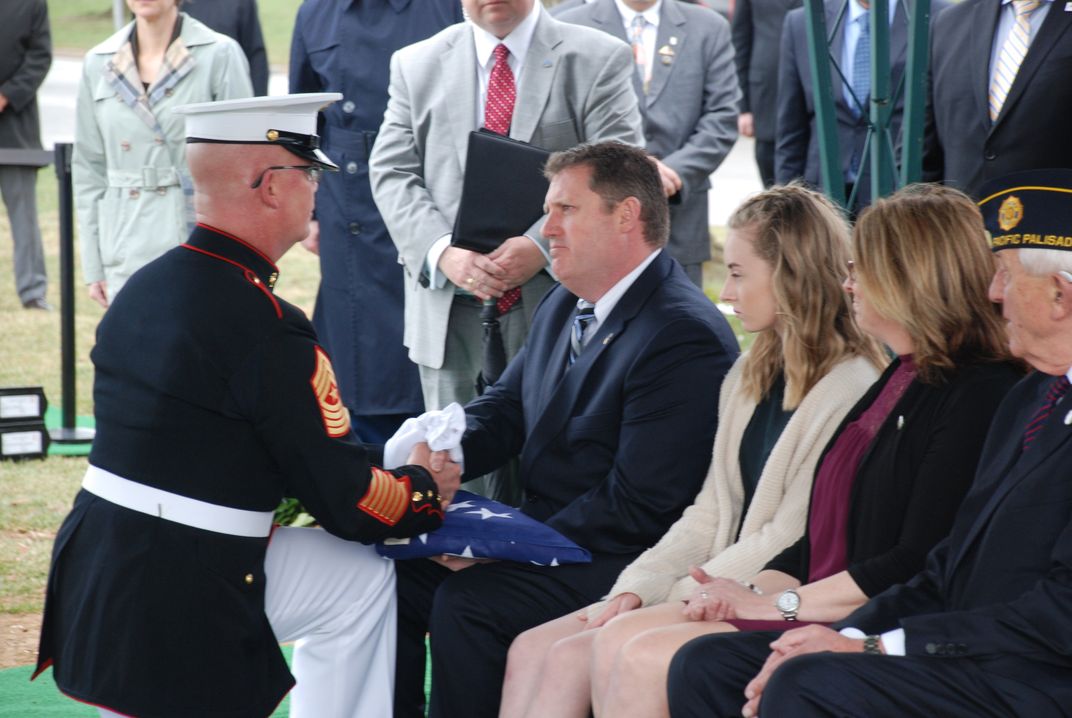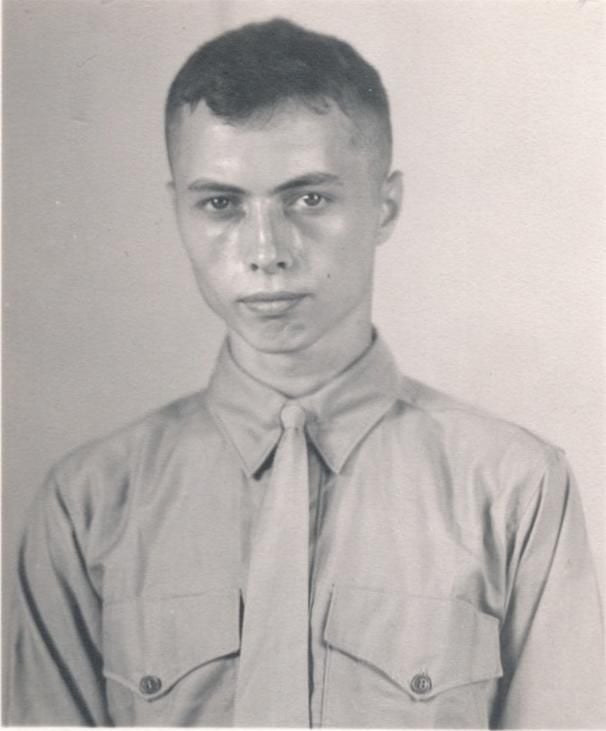WWII Marine Buried at Arlington, 73 Years After His Death
Harry K. Tye’s body went missing after the 1943 Battle of Tarawa. Decades later, his remains were discovered and returned home.
/https://tf-cmsv2-smithsonianmag-media.s3.amazonaws.com/filer/0a/3d/0a3dbe6f-706c-4ee6-b7ff-19186d75a4e3/170328-a-dr853-672.jpg)
Marine Pvt. Harry K. Tye was killed on the first day of the Battle of Tarawa, one of the deadliest encounters between U.S. and Japanese forces during WWII. His body was not recovered after the war, leaving his anguished family without closure. But Tye recently received the funeral that his relatives had long wanted for him, reports Mandy McLaren of The Washington Post. On Tuesday, he was buried with full military honors at Arlington National Cemetery.
Tye’s flag-draped coffin was flanked by soldiers of the Caisson Platoon of the Third Infantry Regiment, the oldest active-duty Army infantry unit in the United States, according to Mike Valerio of WUSA. Twenty-one rounds were fired during the service, which was attended by Defense Secretary Jim Mattis and Homeland Security Secretary John F. Kelly. Tye’s great-nephew David Tincher recieved a folded American flag once the service was over.

The funeral brought an end to a long and difficult chapter of uncertainty. Tincher told McLaren that while he never knew his great-uncle, he saw how Tye’s death—and the unknown whereabouts of Tye’s body—pained his grandmother, Tye’s sister. “Every year at Christmas and his birthday, she would cry about him and say, ‘If they ever find him, bring him home and take him to Arlington,” Tincher explained. “‘That’s where we want him to be.’ ”
Tye was 21-years-old when he was killed on the Tarawa atoll, a ring-shaped cluster of islands in the Pacific Ocean. The area was the first strategic target of the Central Pacific campaign, according to History.com. The U.S. sent 18,000 Marines there in November of 1943, expecting to easily take the tiny island of Betio, which was controlled by the Japanese. The Marines did emerge victorious, but the fight was far from easy. After a vicious 76-hour battle, more than 1,000 U.S. troops were dead, and some 2,000 were wounded.
Many of the dead were buried on the sandy shores where the battled was waged, and their bodies were returned to home after the war. Tye’s remains were never found, writes McLaren. In 1949, a military review board deemed his body “unrecoverable.”
The absence of Tye’s body left a deep void, making it difficult for some family members to accept that he had died. In the summer of 1949, Tye's mother wrote to the Allied Military Headquarters: "In November of 1943 my son was supposed to have been killed in the Pacific. But there never has been anything found to prove that he was dead. So we have got information that he was wounded, picked up and sent to a hospital in Germany. But that he was suffering from shock and did not know anything."
In the letter, she included a picture of Tye, requesting they check the area hospitals to see if Tye had ended up in one. She added, "if you cannot do this for me will you return [the picture] for I treasure it highly as he was my only son."
Later, Tye’s father traveled to Japan in search for Tye. He spent three years traveling around the southeast Pacific, hoping to find him alive, Tincher told Valerio of WUSA.
As the years went on, it seemed ever more unlikely that Tye’s family would find the answers they sought. In 2015, however, Tincher received a phone call from representatives of the non-profit group History Flight, which funds and conducts searches for missing American soldiers. Tye’s remains, they said, had been discovered in a mass grave on Betio Island.
It wasn’t the first time that History Flight had unearthed the missing bodies of WWII soldiers at Tarawa. In 2009, the organization used ground-penetrating radar “to locate, identify and survey five large American burial sites and three individual sites that contained over 200 U.S. Marines left behind after WWII,” History Flight writes on its website.
After hearing from the organization, Tincher and other relatives provided DNA samples to confirm the identification of the body. Once the match was confirmed, arrangements were made for Tye to receive a soldier’s burial—73 years after his death.
Family members looking for more information on missing American service members can visit Department of Defense POW/MIA Accounting Agency.
